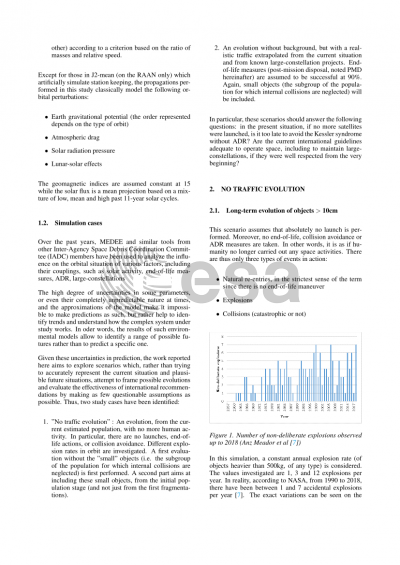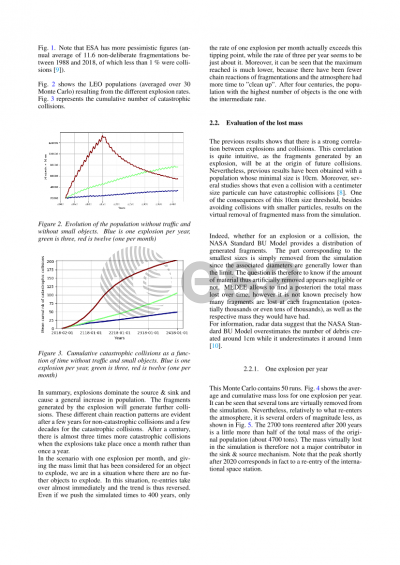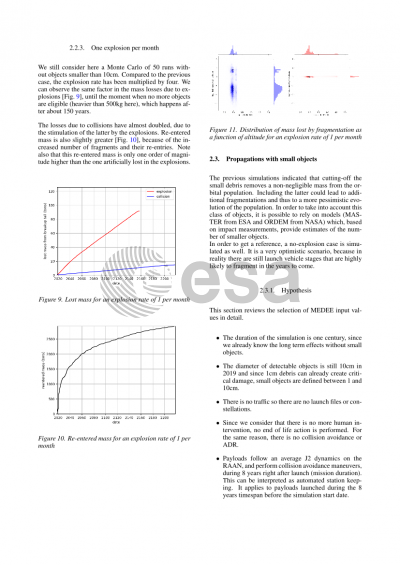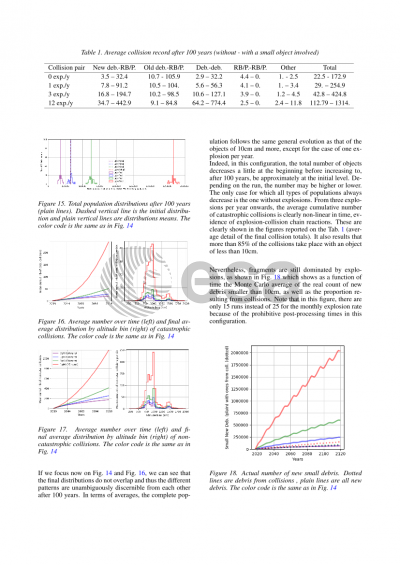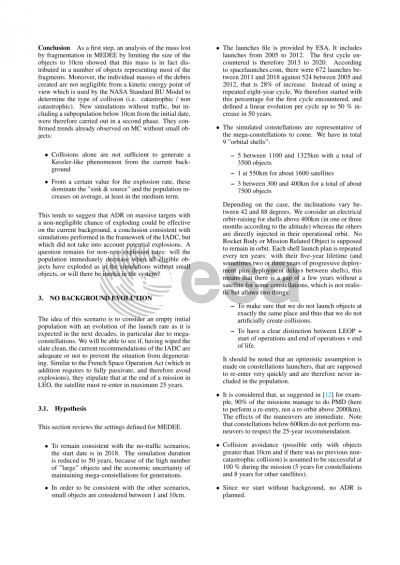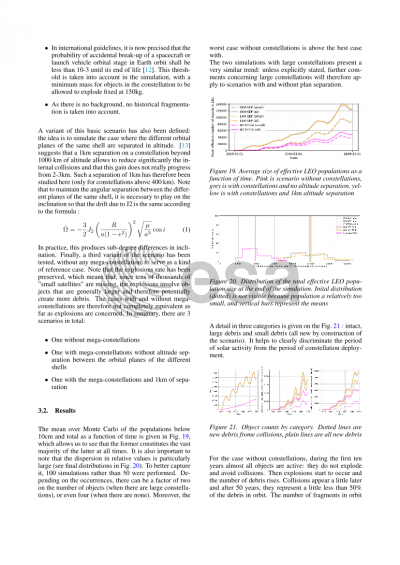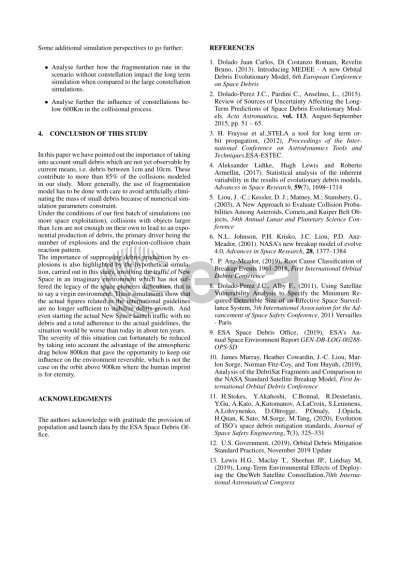Document details

Abstract
Over the past decades, international guidelines and standards have been established to limit the increase of debris in orbit. In particular, over the past years a significant effort has been made to avoid accidental fragmentations thanks to passivation of space objects as well as limiting their resident time in protected zones after End of Life.
In addition many studies have been conducted at international level to identify the needed level of compliance with mitigation guidelines in order to guarantee a stable orbital debris environment over the next 200 years, as well as to identify the situations under which Active Debris Removal (ADR) operations where needed to guarantee such environment stabilization.
Nevertheless, almost the totality of such studies where done considering very optimistic hypothesis affecting both the background population (i.e. the population resulting after more than 60 years of space activity) as well as the future population (i.e. no explosions, new rocket bodies perform direct re-entry, only objects of sizes bigger or equal than 10cm are considered into the simulations).
Today, the reality is that the objects present into the background population continue to explode, at a frequency of between 3 and 12 explosions per year, and that the so called New Space is leading to the launch of an unprecedented amount of new operational satellites, sometimes without maneuverable capability into circumterrestrial orbit.
The work presented on this paper seeks to analyze on a de-coupled manner the role that the background population and that a hypothetical future population, including the so called New Space effects (i.e. mega-constellations), have on the medium (50 years) and long term (100 years) evolution of the orbital population. In addition, the population minimal size has been extended up to 1cm, as a collision with centimeter size objects can also lead to lethal or catastrophic break-up.
The long term projections that are presented on this study has been made with the CNES long term evolutionary model called MEDEE (Modeling the Evolution of Debris in the Earth Environment), using the two main following scenarios. The first hypothetical scenario considers that from the beginning of the simulation, no new launches are performed. The underlying idea is to evaluate the evolution of the population when only collisions and explosions are considered in the absence of any new space activity.
The second hypothetical scenario aims at assessing, without any background population, if current guidelines alone would be efficient to guarantee the sustainability of the orbital environment in the presence of the so-called new space, on top of a “business as usual” traffic, considering both collisions and explosions. As in the first scenario, the population minimal size has been extended up to 1cm.
Preview

